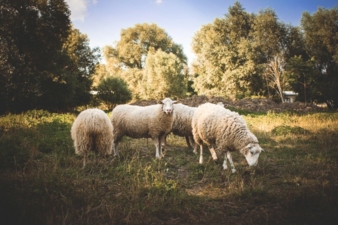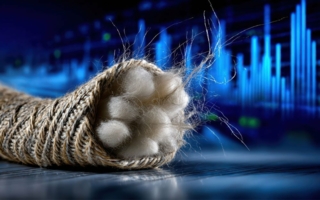18/06/2018 – IVGT — auf Deutsch lesen
The renaissance of natural fibres
German Wool Association e.V.: More than a century ago the traders and processors of wool joined together ...
Deutsche Wollvereinigung e.V.
More than a century ago, wool traders and processors founded an association that would promote their industry’s interests in Germany and represent its members internationally. Its offices are located in the IVGT building (IVGT – German textiles association). As the national branch of the International Wool Textile Organisation (IWTO), the DWV’s members took part in the organisation’s 87th annual world congress, held in Hong Kong in mid-May under the overarching theme “Wool for Future Markets”. One of the central topics of the event was how to advertise wool as a sustainable material to the general public. In his closing address, IWTO President Peter Ackroyd encouraged members to act as ambassadors for the environmental wool declaration that had already been ratified by the association. “Wool is as good as it gets,” Ackroyd pointed out, referring to its natural, renewable and biodegradable characteristics. Stephen Wiedemann, chairman of the “Wool Life Cycle Assessment” work group, pointed out that wool has a positive environmental history and mentioned advantageous characteristics that differentiate wool from other fibres since its entire life cycle assessment (LCA) is now fully documented. Unfortunately, some rating systems in the apparel industry as well some systems used by reputable environmental agencies do not consider the impact of microplastics when assessing a material’s LCA. According to the IWTO, the LCA footprint should evaluate a product from cradle to grave, but since certain data points are not available for all types of fibre, some rating systems only consider products from cradle to factory gate. Distribution, transport, use, care and disposal and their corresponding environmental impact are not taken into account. Therefore, disadvantages of some fibre fabrics are ignored, whereas the biological influence of the animals used for producing wool has a negative impact on wool ratings. Some work groups found that especially merino wool is now used frequently for sports apparel and leisurewear. The overall advantages of natural fibres have led to a renaissance in the clothing and home textiles industries. For many years, man-made functional fibres tried to imitate single characteristics of natural fibres, but modern consumers are now opting more and more frequently for environmentally friendly textiles.
Revision of “Best Available Techniques” (BAT)
The EU reference document on “Best Available Techniques” for the textiles industry and its BAT conclusions form a mandatory catalogue of limit values enforceable at EU level. Its revision recently started with a one-week kick-off meeting in Seville. Michael Pöhlig, Dr Monika Kohla (both IVGT) and Johanna Höger (association “textil+mode”) are Germany’s representatives on the panel that is currently revising the document. This panel also consists of further experts from EURATEX, the European umbrella organisation for the textiles and clothing industry.
The first draft of the revised document is set to be finished in June 2019 and by mid-2020, the final revision including BAT conclusions should be complete. The documents will then be released in late 2020. Four years after their publication in the European Official Journal, i.e. most likely in 2024, companies will need to have implemented state-of-the-art techniques described in the document and have made corresponding adjustments.
A comprehensive consultation process is essential to defining suitable techniques that can be implemented by manufacturers and will not have a negative impact on the entire textiles chain. The IVGT, therefore, plans to inform its members as early as possible and will try to involve them in the process.




